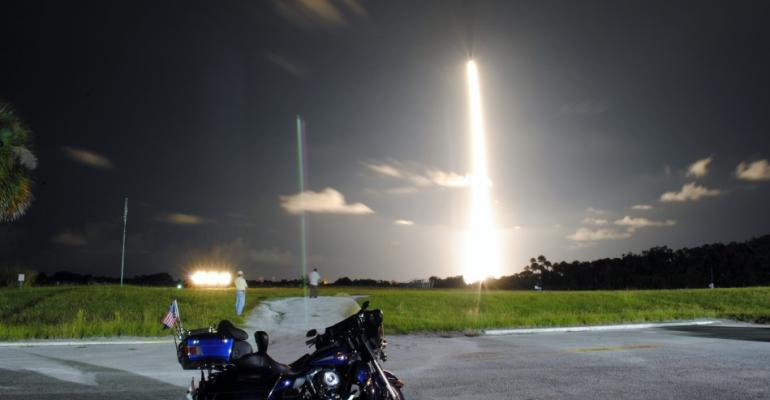After watching the reveal of HoloLens back in January and then having an opportunity to use it during Microsoft's Build Conference I realized it is a very dynamic piece of technology despite its challenges related to a limited Field of View (FOV).
Actually the issue is not so much that it has this FOV limitation but that Microsoft's demos of it show this utopian view of all the holograms in the scene despite the reality of the wearers point of view.
Anyway, that is a subject for another article.
In this article I get to fuse together two other passions of mine.
The first is Microsoft related technologies and HoloLens certainly falls squarely into that but now I get to add rockets and space into the equation with this announcement today from Microsoft and NASA.
This Sunday, 28 June 2015, SpaceX is scheduled to launch a Dragon cargo vessel to the ISS in the companies seventh re-supply mission to the orbiting complex. The Dragon will climb to orbit on top of a SpaceX Falcon 9 rocket from Launch Complex 41 at the Cape Canaveral Air Force Station (CCAFS) with launch scheduled for 10:21 AM Eastern Time.
Onboard that cargo vessel, amongst all of the other critical supplies, there will be two Microsoft HoloLens devices that will be part of a collaboration between NASA and Microsoft called Project Sidekick.
The goal of Sidekick is to enable station crews with assistance when and where they need it. This new capability could reduce crew training requirements and increase the efficiency at which astronauts can work in space.
Remember those demo scenarios we saw after the products reveal in January where someone was receiving assistance over HoloLens for a plumbing job and repairing a light switch?
Well in the simplest of terms that is what Project Sidekick is all about. Imagine an astronaut or engineer on earth in a simulator showing an orbiting astronaut exactly how to make a repair using Skype to communicate and share visuals.
After the devices arrive at the space station, crew members will test and verify the software and hardware functionality in a standalone mode. A second set of devices to be delivered on a future mission will test and verify Sidekick functionality with network connectivity to test the Remote Expert Mode. NASA expects astronauts on the station will first use Sidekick by the end of the year.
NASA will even use HoloLens and Sidekick during the NASA Extreme Environment Mission Operations (NEEMO) 20 expedition next month during a two week mission onboard the undersea laboratory Aquarius.
The Sidekick project is part of a larger partnership formed by NASA and Microsoft to explore applications of holographic computing in space exploration. Earlier this year, NASA and Microsoft announced a collaboration to develop software called OnSight, a new technology that will enable scientists to work virtually on Mars using the same HoloLens technology. NASA’s Jet Propulsion Laboratory (JPL) in Pasadena, California, led the development of Sidekick and OnSight. NASA’s Johnson Space Center in Houston led testing and certification of Sidekick for use onboard the space station.
So, as if I needed any other excuse to head down to CCAFS and watch a launch, I will be heading down to observe the launch Sunday morning. It will not be the first time myself and my Harley have seen a SpaceX rocket head towards the ISS either.
More to follow.





